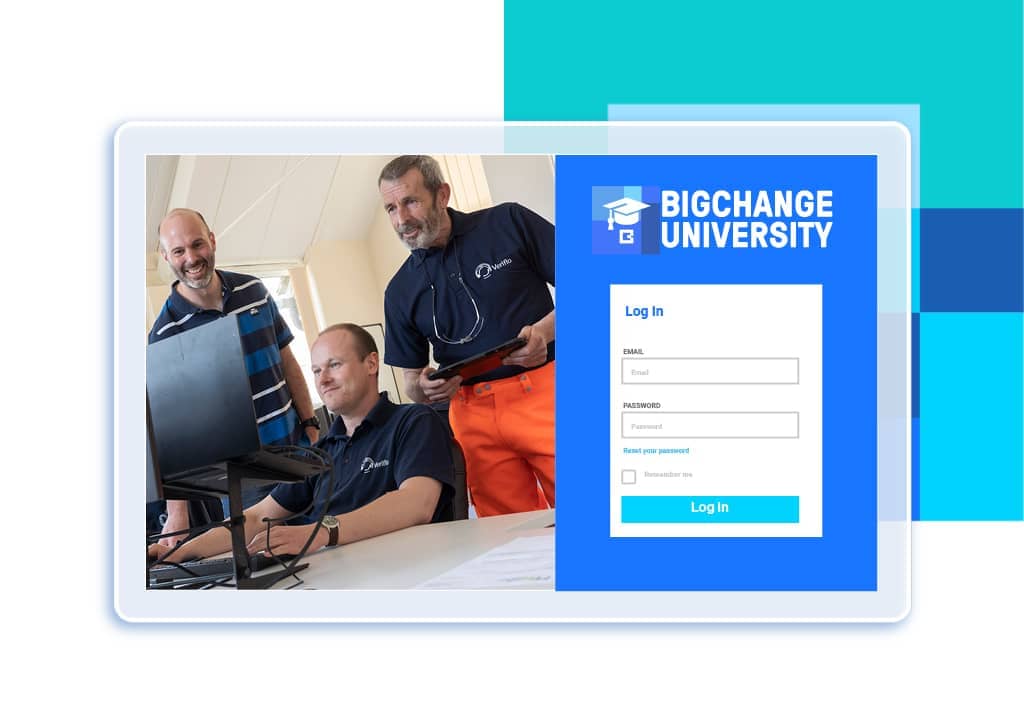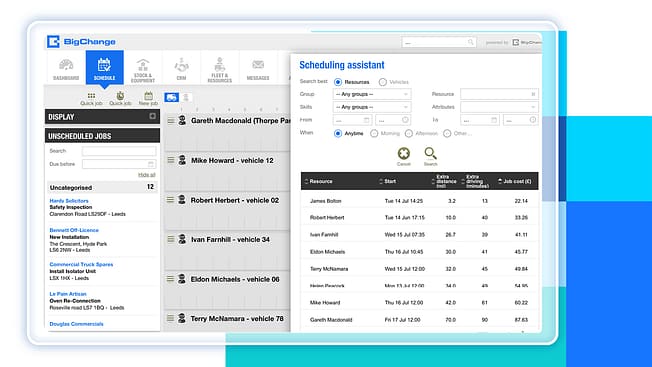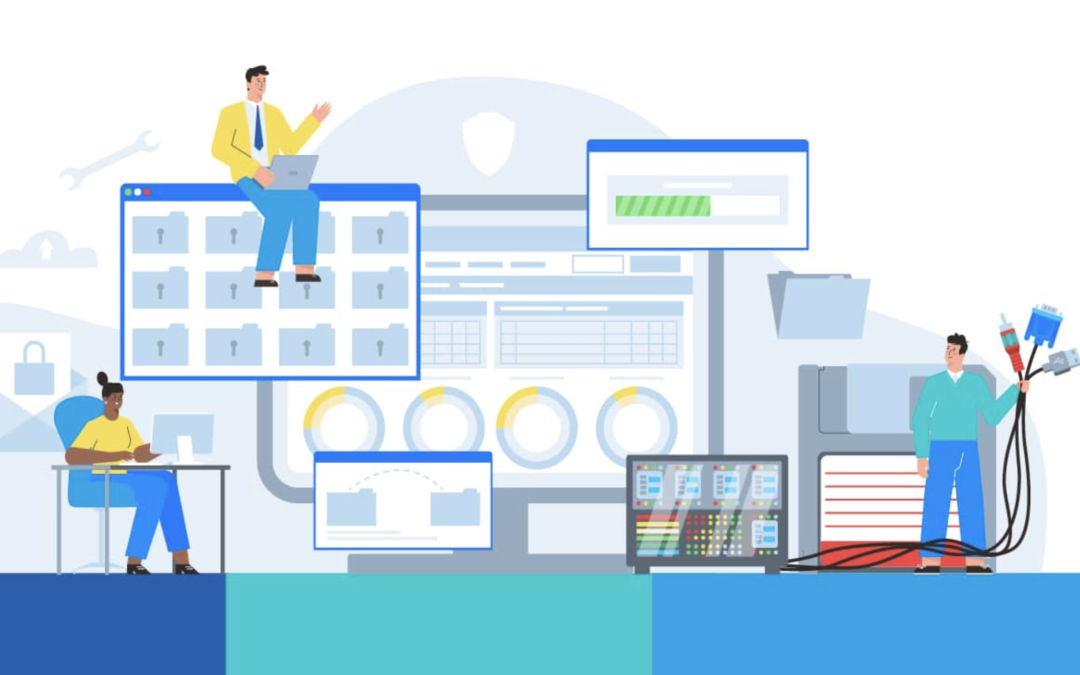Are you struggling to manage your field service operations with your current job management software solution? If your software is no longer supporting your needs, it may be time for an upgrade.
Many field service businesses reach a tipping point where their job management system that once worked for them holds them back instead of helping them grow.
This article will cover the top signs that show field service businesses have outgrown their current job management software and need to upgrade to a more robust, modern solution.
Let’s get into it.👇
6 SIGNS IT’S TIME TO UPGRADE YOUR FIELD SERVICE SOFTWARE
The right software solution can streamline operations, improve productivity, provide visibility into workloads and schedules, integrate with other systems, and enable data-driven decisions. However, over time, businesses evolve and often outpace their original software capabilities.
By understanding the common signs you’ve outgrown your current field service management solution, you can proactively plan for an upgrade and implement new technology that will provide the efficiency and functionality your business needs as it continues to grow.
So let’s go through the 6 key signs to help you make the case for change:
1. YOUR SOFTWARE CAN’T HANDLE YOUR COMPANY’S GROWTH
As your field service business grows, an outdated job management system will hamper operations instead of improving them.
Here are some common signs your software can no longer handle your company’s growth:
- Performance declines as the number of users, work orders, and jobs scheduled increases. Systems may crash or run very slowly. This impacts productivity.
- You hit usage, storage or functionality limits in the software. For example, you can’t add any more engineers, customers, jobs etc. beyond a certain threshold.
- The system can’t easily scale to add new locations, branches or business units. And managing a multi-location workflow requires clumsy workarounds.
- Scheduling and dispatching gets highly inefficient as the volume increases. Routing jobs to properly skilled engineers in a logical sequence becomes difficult.
- Reporting lacks flexibility and granularity as your data set grows. Insight into staff utilisation, job costing, service levels and more is obstructed.
- Data entry, billing and other processes require excessive manual work instead of automation. Your staff wastes time on administrative tasks.
Upgrading to a robust system designed for scalability, like BigChange, allows your software to grow with your business. Advanced scheduling optimisation, unlimited cloud storage, and automation capabilities keep operations running smoothly.
When your operations run on BigChange’s job management app, you can track the progress of every job against your schedule, as well as keep every vehicle in view.
2. YOUR CURRENT SOFTWARE LACKS KEY FEATURES YOU NOW NEED
Over time, as your business needs evolve, you may find your job management software lacks key features and capabilities you now need:
- There is no routing and scheduling optimisation. Engineers are dispatched sub-optimally based on distance, skillset, and availability. This inflates mileage costs and will need more resources to fulfill the jobs.
- Reporting is basic and inflexible. You can’t generate the customised reports you need to extract insights. And there’s limited business intelligence.
- Work order management remains manual. No automation for creating, assigning, and tracking work orders. This creates administrative burden.
- Invoicing and billing functions are inadequate or absent. Tedious manual entry is required, leading to errors and delays in getting paid. (More on this next.)
- No mobile access for field engineers restricts real-time information delivery and lengthens your response time to customer requirements – especially emergency call-outs. Engineers can’t easily track jobs or enter data from the field.
- Lack of customer portal limits visibility into job status, tech ETA, and other details customers now expect. This causes frustration.
Transitioning to comprehensive field service management software opens up powerful functionality like intelligent scheduling, custom reporting, work order automation, mobile access, and customer portals.

(Give customers more control with a user-friendly online portal to request, book, and manage appointments at their convenience.)
3. YOUR CURRENT SOFTWARE LACKS INTEGRATION WITH OTHER SYSTEMS YOU NOW USE
A major limitation of outdated field service management solutions is lack of integration with other business systems:
- No integration with your accounting platform means invoices, payments and other financial data must be entered and updated manually in multiple systems. This creates duplication of work and risks of error.
- Without CRM integration, customer data is disjointed. Contact details, communications, and field service history can’t be linked together in one place. This results in a fragmented view of the customer.
- Since there is no inventory integration, parts usage can’t be automatically tracked or invoiced for (when used as part of a job). Manual stock level adjustments are required after jobs are completed.
- No integration with marketing systems prevents leveraging your service data to drive targeted campaigns.
All-in-one field service management systems integrate seamlessly via APIs with leading CRM, accounting, inventory, and other platforms, like Xero and Quickbooks Online. This eliminates duplicative data entry, provides a unified dataset, and enables more automated processes.
4. THE SOFTWARE NO LONGER PROVIDES ADEQUATE SUPPORT OR DEVELOPMENT
Using outdated software that lacks support and development can become a major headache:
- Your system may run on an older platform or infrastructure that has compliance and security risks. Without ongoing support, these risks grow over time.
- The vendor may no longer be releasing updates, fixes or new features for your deprecated version. You miss out on improvements other customers receive.
- Support resources are limited for superseded products. You may wait weeks for responses when you encounter issues or have questions.
- The vendor could phase out support completely at any time. Then you are completely on your own with an obsolete system.
- Having no roadmap for future development means you don’t know if or when critical new capabilities will be added.
By upgrading to a current solution, you ensure you are on a supported platform that receives regular security patches, feature enhancements, and vendor assistance when needed.

(BigChange University works alongside our onboarding process to ensure you have BigChange set up quickly, in exactly the right way for your business.)
5. YOUR TEAM COMPLAINS ABOUT THE CURRENT SYSTEM’S POOR USABILITY AND OUTDATED INTERFACE
Clunky, unintuitive software hampers productivity and adoption among your field service technicians and staff:
- Engineers complain that the system is too difficult to use on mobile devices. Entering data from the field becomes a chore rather than a quick task.
- The interface is outdated and crowded with complex menus. Newer employees require excessive training time to learn to use it.
- Finding customer history, work order details or other records requires too many clicks and navigation. Simple lookups become tedious.
- There is no workflow guidance or automation. Workers must remember processes instead of being guided by the system.
- Reporting and dashboard capabilities are limited. Users can’t easily extract the data insights they need.
- Features like drag-and-drop scheduling are lacking. Every action requires manual steps.
Modern field service management systems, like BigChange, provide intuitive, responsive interfaces on both desktop and mobile. Workflow automation, guided processes, and powerful analytics reduce complexity and friction.

(Our easy-to-use real-time scheduling assistant makes it easy to allocate teams, assets, and vehicles)
6. CUSTOMERS EXPECT REAL-TIME TRACKING, NOTIFICATIONS AND VISIBILITY
Outdated job management systems fail to provide the real-time transparency customers have come to expect:
- There is no customer portal or mobile app for clients to track job status, technician ETA, and get notifications.
- Customers can’t see details like work order progress, parts used, or notes from the engineer. Everything is opaque.
- Without visibility, customers frequently call your office asking for updates on when an engineer will arrive or what is being worked on.
- There are no automated customer satisfaction surveys or Net Promoter Score tracking. You lack insights into the customer experience.
- Reporting on metrics like first-time fix rates, response times, and service levels is limited or absent.
Robust solutions provide complete customer visibility through portals with real-time updates on work in progress, reminders, and satisfaction measurement. This transparency improves loyalty and retention.
(Our job management software enables you to check the availability and locations of engineers, parts, and equipment in real-time.)
IS IT TIME TO UPGRADE YOUR JOB MANAGEMENT SOFTWARE?
If you’ve noticed multiple signs like difficulty scaling, lack of critical features, integration problems, poor usability, and insufficient customer visibility, it may be time to upgrade your job management software.
Outdated systems that no longer fit your business needs will only create headaches and frustrations, plus make you uncompetitive. So take time to evaluate your current platform against the signs covered in this article. If the cons start to outweigh the pros, then it’s likely worthwhile to start researching better solutions tailored for field service businesses – like BigChange.
The right software will streamline operations, increase productivity, reduce costs, and position your company for future growth. Upgrading to an integrated, cloud-based system with scheduling optimisation, mobile apps, customer portals, and automation can transform efficiency.
Your team will work faster and smarter, customers will perceive a higher level of service, and data-driven insights will inform strategic decisions. The bottom line: The benefits of implementing current, full-featured technology far outweigh the short-term hassles of change. With the right platform in place, you will be set up for scalability, productivity, and continued success. Take BigChange for a test drive now and talk to our experts.
